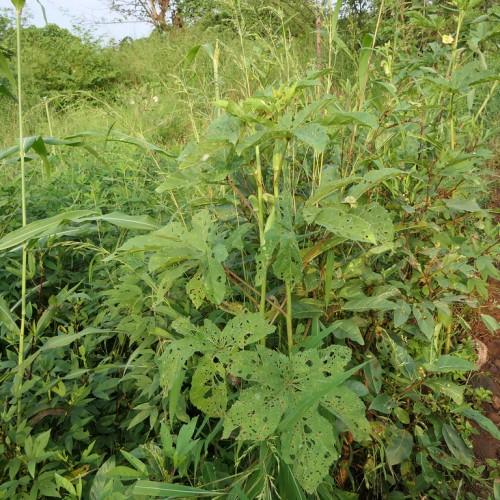
okra
Abelmoschus esculentus
Cycle:
Annual
Watering:
Frequent
Hardiness Zone:
2 - 11
Flowers:
Flowers
Sun:
full sun
Fruits:
Fruits Ready In
Edible:
Yes
Leaf:
Yes
Growth Rate:
High
Maintenance:
Moderate
Drought Tolerant:
Yes
Salt Tolerant:
Yes
Tropical:
Yes
watering
Okra should be watered frequently, as soon as the topsoil becomes dry to the touch. Small okra plants should receive a light watering every 2 to 3 days, while mature plants should be watered daily or every other day during hot, dry periods. During cooler weather, okra will require less water; however, it is important to not neglect the plant, as it is still growing and producing fruit. Be sure to never over-water your okra plants; okra thrives in dry soil and too much water can stunt its growth or cause it to rot.
sunlight
Okra prefers full sunlight for optimal growth and production of fruit. The plants should receive at least 6-8 hours of direct sun per day, with midday summer sun being best. If grown in partial shade, okra will produce an abundance of foliage but few fruit pods. Allowing okra to grow in an area with too much shade will often lead to spindly, sparse plants that are susceptible to disease and pests.
pruning
Pruning okra (Abelmoschus esculentus) should take place after the okra has flowered. You should remove the flower stalks when they die off, to help promote bushier growth. During the season, lightly prune the okra plant by pinching off the growing tips of the branches. This will help ensure more lateral branching. The okra plants can be pruned about once a month until the end of August, at which time they should be pruned back to about 12 inches. Overall, you should plan to remove about 1/3 of the older, mature stems each year to prevent disease build-up and promote new growth.
